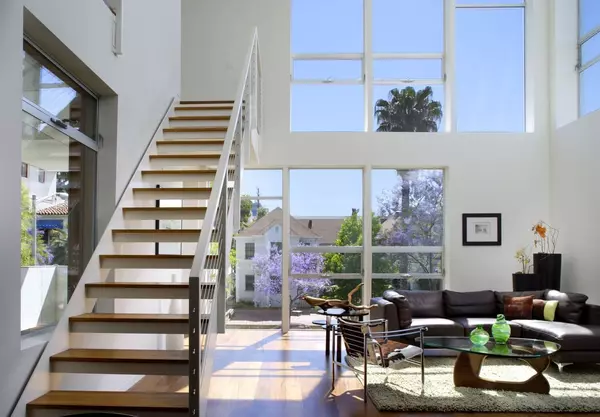How a Massive Funding Surge is Reshaping Calgary’s Arts Landscape


The arts in Calgary are in the midst of an evolution. All three levels of government are pouring investments into cultural infrastructure, with massive renovation plans and builds happening at the Werklund Centre (formerly Arts Commons), Glenbow’s revitalized home at the JR Shaw Centre for Arts & Culture, Contemporary Calgary and the National accessArts Centre.
“It’s so important, these art investments that we make,” says Contemporary Calgary CEO, David Leinster. “It makes for a more creative place to do business. It makes your talent pool a group of people who think so dynamically. It makes this more of an amazing place to live. It makes an amazing place to work. It makes an amazing place to raise a family. It makes it an amazing place to be.”
This support is not just sustaining the arts — it’s redefining who gets to participate, how culture is shared and what it will mean to create in Calgary in the future. Here’s a look at just a few recipients and funders behind this unprecedented investment in Calgary’s art and culture.
Funding from Calgary Arts Development Helps Artists Focus on Creating

In addition to funding from the province through the Alberta Foundation for the Arts and from the federal government through the Canada Council for the Arts, Calgary’s arts ecosystem is facilitated by a range of grant programs delivered municipally through Calgary Arts Development (CAD), which allocates its funds from The City of Calgary. These programs are designed to support local artists, arts organizations and community groups at all stages of their creative journeys, with an emphasis on inclusion, accessibility and sustainability.
CAD distributes funding across several streams, including project grants, operating grants and microgrants. Other programs, like the Original Peoples Investment Program, are tailored to support Indigenous artists, communities and grassroots arts initiatives that may fall outside traditional funding models. Many grants are adjudicated by peer committees, ensuring decisions reflect community values and lived experiences.
Project grants support one-off performances, exhibitions and research, while operating grants like the Future Focus Program help arts organizations develop significant shifts in operational activities towards future-focused practices.
Microgrants, like the Artist Development Microgrant that offers up to $15,000, can be especially impactful for emerging artists and small collectives, offering flexible support with fewer barriers to entry.
Smaller arts organizations, like local production company Jupiter Theatre, often rely heavily on such grants for their operations.
Founded in 2019 by Andrew Cooper with a hyper-local mission, Jupiter stages works by local playwrights and hires Calgary- and Alberta-based artists.
Cooper moved to Calgary for the city’s emerging creative energy and opportunities for local indie theatre. In its early stages, the production company was supported through crowdfunding, ticket sales and smaller project grants. Jupiter navigated through the COVID-19 pandemic with targeted relief funding for live entertainment, but, in recent years it has secured stable operating support from both CAD and the provincial government.
“Getting the operating funding from CAD allowed me to change how my life is set up so I can focus more time on creating the art and on growing the community and producing local theatre,” says Cooper. “All of those things were able to happen because we have money that we can depend on outside of just ticket sales and fundraising.”
Funding from CAD allows arts organizations of different sizes the opportunity to create through the stability of its grants and resources. For many groups like Jupiter, CAD’s support is a pivotal factor in sustaining a creative economy in Calgary.
Werklund Centre (formerly Arts Commons)

The Arts Commons Transformation (ACT) project is one of Calgary’s most ambitious cultural infrastructure investments, aiming not only to expand its artistic capacity, but to reshape the city’s downtown core.
Werklund Centre, (formerly Arts Commons) was previously a multi-venue arts and performing space, housing some of Calgary’s biggest arts organizations, like Calgary Philharmonic and Theatre Calgary.
“It is the largest cultural infrastructure project in Canadian history,” says Werklund Centre president and CEO Alex Sarian.
The former Arts Commons is now known as the Werklund Centre, in recognition of a donation of $75 million by Dave Werklund and his family for the project’s construction, as well as an endowment. In 2024, the provincial government announced its commitment of $103 million over the course of seven years to the ACT.
Additionally, $315.5 million was contributed by the Calgary Municipal Land Corporation (CMLC), the City and other municipal sources for the expansion. The project currently has secured $510 million of its fundraising goal of $660 million.
The ACT is part of a broader City vision to re-anchor downtown Calgary as a thriving arts and community hub. The project is being built in several phases.
Phase 1 will see the construction of a new three-storey building that includes a 1,000-seat theatre, a 200-seat black box theatre and public and community spaces.
Phase 2 will transform the former Olympic Plaza site, creating a renewed outdoor gathering space.
Phase 3 will focus on revitalizing the existing building to improve functionality, audience experience and accessibility.
The transformation is as much about accessibility as it is about building a lasting community that gathers around the arts. The ACT’s reimagining of arts spaces is intended to remove barriers to entry and create places where diverse communities feel welcome to participate in the arts.
“This is a matter of having beautiful places that everybody feels that they have access to and everybody feels like they belong in regardless of what quadrant they live in, regardless of their household income, regardless of nationality,” says Sarian.
Glenbow at the JR Shaw Centre for Arts & Culture

Glenbow closed in 2021 for redevelopment of its 312,000-square-foot space, and its reopening has been long anticipated. This revitalization project has been dubbed Glenbow Reimagined by the project team. The project aims not only to reconfigure the museum for accessibility, but also to create more room for visitors to explore its collection of historical artifacts, cultural pieces and art galleries.
“There are about 250,000 artworks, objects and cultural belongings held and cared for by Glenbow. We have the largest public art collection in Western Canada,” says Sam Brown, manager of marketing and communications at Glenbow. “Part of our approach to the building and new exhibition program that’s being developed is to make sure that more of Glenbow’s collections can be seen by more people, more often.”
The previous building offered limited physical access to its collection. It is being redesigned as a fully accessible and community-oriented space.
“One of the primary drivers behind this was accessibility,” says Brown.
“Originally, there was limited access to the collections. There was limited gallery space, so it was not possible for us to share more of the collection.”
To that end, the renovation will allow patrons to access all floors of the museum to see into some of the working and storage spaces through large windows.
The newly reconfigured building will also have a new front entrance opening directly onto Stephen Avenue.
Though the museum collection will still be known as Glenbow, the building itself will be renamed the JR Shaw Centre for Arts & Culture in honour of a $35-million donation by the Shaw Family Foundation.
Through this donation, the museum will also offer free general admission to regular exhibits for all.
“It’s a big deal, because Glenbow will be the first museum of our size to offer free admission in Canada. No other museum of our scale offers free admission in this whole country,” says Brown.
Glenbow Reimagined has been supported by government on all three levels. With $48 million from the City $40 million from the Government of Alberta and $43 million from the Government of Canada, along with the Shaw Family donation, the museum has currently raised $193 million of its campaign goal of $205 million.
The redeveloped building will feature amenities like a new gift shop, a theatre, a restaurant and a 13,000-square-foot rooftop terrace. The vision is to create a contemporary museum that reflects Calgary’s diversity and heritage and fosters lifelong engagement with art and culture.
“It’s been so thoughtfully renovated. The new exhibitions and behind-the-scenes experiences, the programming, everything — there’s so much thought going into making the new experience of the museum amazing,” says Brown.
Contemporary Calgary

Contemporary Calgary’s current brutalist-style building was once the home of Telus World of Science, including the Calgary Centennial Planetarium. After settling an agreement with the City to lease the property in 2018, Contemporary Calgary opened its doors in 2020 to showcase world-class contemporary art. In early 2019, the organization announced a plan for its grand transformation through the Centennial Planetarium Transformation Project.
Through the project, the gallery will become a premier centre for contemporary art, immersive media and community connection.
An initial investment of $24.5 million was made by the City to complete the first of three phases of the project. In addition to several public and private donors, the Government of Alberta has committed $40 million, contingent on the outstanding project funds being raised, and the Government of Canada has committed $30 million. The total estimated cost is $170 million, and Contemporary Calgary hopes to secure the remaining $70 million to complete the project from the City and private donors.
The project includes a new street-level entrance pavilion, an education wing and a sculpture garden.
“A visit to Contemporary Calgary already offers five or six distinct exhibitions and experiences — something that can take several hours to fully explore,” says David Leinster, CEO of Contemporary Calgary. “As part of our transformation, we’re introducing a restaurant, a bookstore and gift shop featuring artist publications and curated design objects, as well as new spaces to gather, reflect and connect.”
“These elements are essential to creating a complete and inviting gallery experience — one that not only supports our visitors, but positions Contemporary Calgary alongside the world’s leading contemporary-art institutions.”
The expansion plans also include a new climate-controlled gallery space and an event centre. Parts of the original structure will also be restored, including The Dome theatre.
“We will renovate additional spaces to optimize them for art viewing, like The Dome, which is a huge project to make it Canada’s first LED dome,” says Leinster. The micro-tile LEDs give artists more ways to create using digital and immersive technologies.
The expansion is an ambitious vision for how art will shape the future of Calgary, rooted in connecting communities and creating belonging.
“We want to attract people into the building by offering them more than just art, like offering them a place to [just] be,” says Leinster.
National accessArts Centre

The National accessArts Centre (NaAC) is set to begin construction on two new arts facilities in Calgary, designed specifically to serve artists with disabilities. The project includes the revitalization of the old Scouts Hall in West Hillhurst as The Trico Communities Accessible Arts Centre (TAC) and the new Multidisciplinary Disability Community Arts Hub (MDCAH) campus, situated side-by-side along Memorial Drive.
These facilities come at a time of necessity for the NaAC. The arena roof of its current home at Fairview Arena collapsed in 2018, making the facility structurally unsafe to continue full operations. The organization aims to open TAC in winter of 2026, while the learning campus MDCAH is expected to open in fall of 2027.
“Our artists deserve a space that was built with them in mind,” says Jung-Suk Ryu, president and CEO of the NaAC. “This isn’t about building something for the sake of being flashy — it’s about building something functional and accessible.”
The total funding amount needed for the new facilities is anticipated to reach $24 million. The Government of Canada invested $750,000 to transform Scouts Hall in addition to $8.2 million for the MDCAH. NaAC also received $4.5 million from the City and $1 million from the provincial government. The remaining funds are being raised through community donations and corporate sponsors, with $16.2 million secured so far. TD Bank is NaAC’s presenting sponsor and the largest private donor to date, contributing $400,000 in operational support this year.
The interior of TAC will be designed in a way that respects the building’s heritage status. “The Trico Centre is a visual arts studio space that will be built with complete accessibility in mind, including things like barrier-free entry, accessible tables and a quiet room,” says Ryu.
The MDCAH will house spaces for non-visual arts, including performing arts spaces, multi-purpose gallery rooms and audio labs for music creation. Lil E Coffee Cafe, a local coffee shop that exclusively employs baristas and servers with developmental disabilities, will also open in the MDCAH building.
NaAC hopes the new hub will demonstrate how investing in local and accessible community-based infrastructure can reshape Calgary’s arts ecosystem from the ground up.
“I hope that the NaAC can be one of those organizations and facilities that can be an example, proving that community-based programs and infrastructure and dedicated spaces that uplift marginalized communities absolutely work and that they are integral to building out a stronger arts ecosystem in Calgary,” says Ryu.
Remaining Funding Gaps
These investments in new buildings and infrastructure will be transformative for Calgary’s arts, but arts funding continues to be challenging to secure — especially to sustain existing programs.
Amidst several recent arts-investment announcements, many in the arts community were dismayed to hear that Evergreen Theatre Society could not afford to continue operations. After 34 years of community-based arts programming in Calgary, Evergreen closed its doors on June 30. Known for science-themed musical theatre and educational programming for kids, Evergreen provided accessible and affordable arts spaces.
The organization served many minority arts groups in its northeast community. At its peak, Evergreen performed for more than 120,000 people annually and supported 80 to 90 grassroots arts groups. Despite its impact, the organization was unable to secure the financial backing needed to stay open.
The tipping point came when the Social Enterprise Fund (SEF), which loaned Evergreen $5.5 million in 2014 to purchase and renovate its building, abruptly ended support and demanded full repayment.
“It’s disappointing — after 34 years, the fight can be a bit exhausting,” says Sean Fraser, Evergreen Theatre’s executive director.
Though Evergreen met its agreement with the SEF to make interest-only payments — totalling approximately $1.1 million over 10 years — the debt proved too great without substantial public funding. Evergreen had received around $600,000 (less than 10 per cent of its annual operating budget) in government funding during its three-decade run.
Fraser says the issue isn’t just Evergreen’s — it’s systemic. While large arts organizations receive larger amounts of resources in redevelopment funds, smaller organizations face barriers to accessing even a fraction of that support.
“We’re not shiny,” says Fraser. “We only need maybe one per cent of the budget many of these large projects get.”
Evergreen’s story is an example of how grassroots arts organizations can get squeezed out of Calgary’s evolving cultural landscape, despite the intimate impact it had on its community. However, Fraser hopes the conversation about funding continues to evolve to support a more equitable arts landscape.
“We’ve got nothing to be ashamed of. We can only be proud about the work we’ve done [at Evergreen Theatre],” says Fraser. “It may not save us, but maybe this conversation will help the future.”
The Rozsa Foundation is one organization that plays a pivotal role in creating more-equitable opportunities for small players in the creative economy to grow.
The Rozsa Foundation is a privately endowed funder that plays a quiet, yet vital, role in Calgary’s arts ecosystem. Unlike public agencies, The Rozsa Foundation doesn’t fund artmaking directly, but instead strengthens the sector through leadership development, training and capacity-building initiatives.
Grants like the Future Focus Program, in partnership with Calgary Arts Development and Calgary Foundation, and training programs like Foundations of Leadership in the Arts with the Haskayne School of Business at the University of Calgary, allow opportunities for growth for the arts sector and its leaders.
“We have hundreds of arts managers and arts leaders who are actively working within Calgary’s art sector who have been through our programs,” says Simon Mallett, Rozsa Foundation’s executive director. “We’ve invested in quite a few venue-based explorations for smaller arts organizations who need venue solutions. There’s so many touchpoints we offer in the arts community to make an impact.”
Rozsa’s independence allows it to advocate for systemic change and respond quickly to community needs — such as launching equity-focused programs and supporting small, under-resourced organizations.
“We can be highly responsive to what’s happening in the sector. In 2020, there was a lot of conversation around the lack of pipelines towards leadership for aspiring BIPOC leaders. And so we worked alongside the community to develop funding support and leadership programs for those individuals,” says Mallett.
Through partnerships with funders, both private and public, Rozsa enables both grassroots growth and long-term planning. Its impact is measured not just by outcomes, but how it can allow arts organizations of all sizes to continue to create.
No matter the size of an infrastructure project or the resources allocated to funding the arts, Calgary’s culture wouldn’t exist without the artists and audiences who participate in it. A healthy creative economy includes large and small organizations that continue to foster a diverse, vibrant arts community.
As Alex Sarian with Werklund Centre succinctly puts it: “These infrastructure projects mean nothing if we cut the ribbon on them and there’s no artist community left in Calgary.”
[Note: This has article and a photo caption have been changed from its original print version to reflect that the revitalized home of Glenbow is called the JR Shaw Centre for Arts & Culture.]
The post How a Massive Funding Surge is Reshaping Calgary’s Arts Landscape appeared first on Avenue Calgary.
Categories
- All Blogs (694)
- AB Gov Grants & Rebates (6)
- airbnb-vs-long-term-rentals-calgary-guide (2)
- buyer resources (2)
- Calgary Real Estate (14)
- Edmonton Real Estate (6)
- First Time Home Buyer (11)
- Investment Tips (11)
- market update (7)
- Monthly Market Report (1)
- Mortgage Tips n Tricks (4)
- North East Calgary (1)
- North West Calgary (1)
- Property Management (3)
- Real Estate Trends and Insights (5)
- Saskatoon Events (1)
- saskatoon real estate (1)
- seller resources (2)
- SK Gov Grants & Rebates (10)
- Solution (4)
- Things To Do In Saskatoon (1)
Recent Posts











"My job is to find and attract mastery-based agents to the office, protect the culture, and make sure everyone is happy! "

